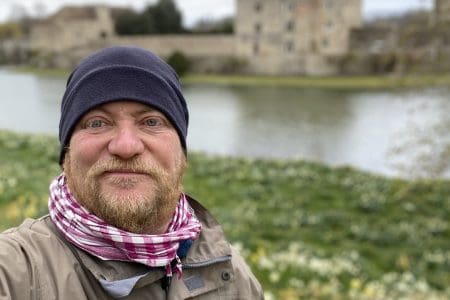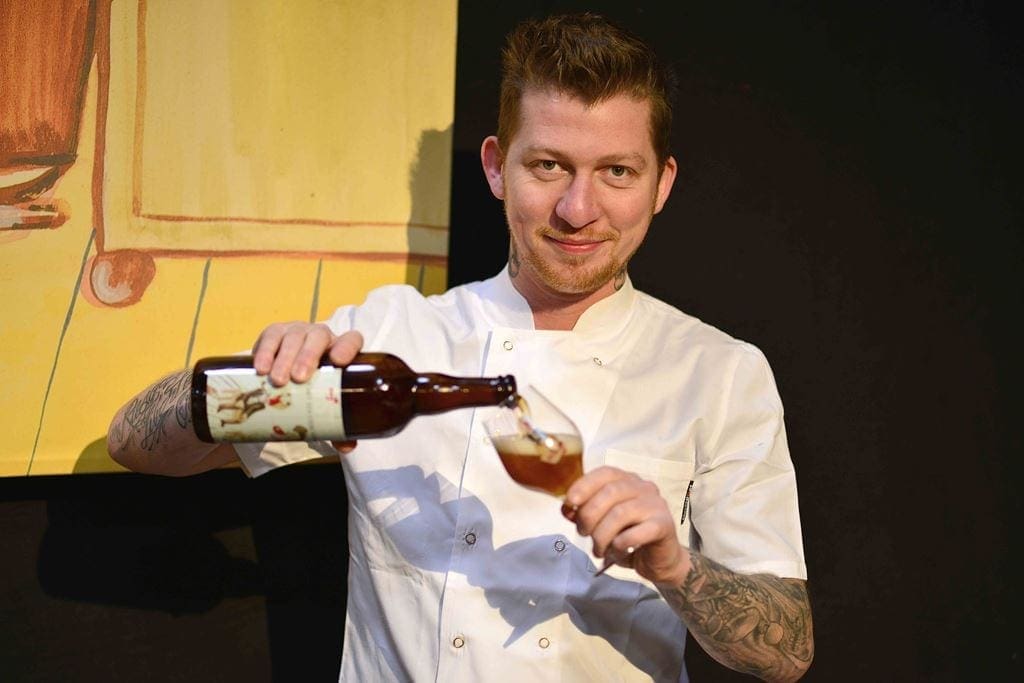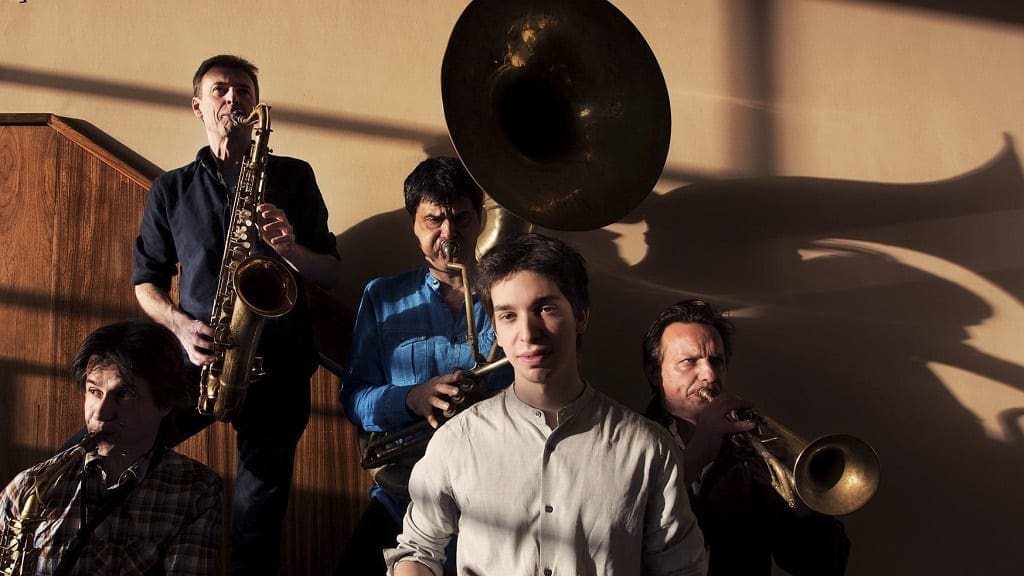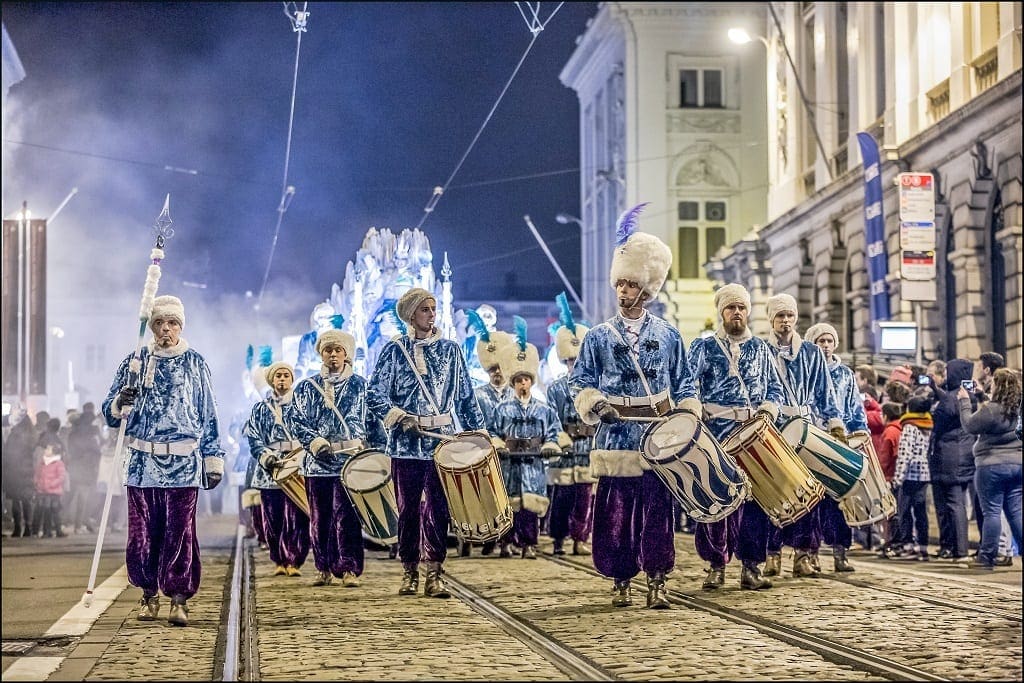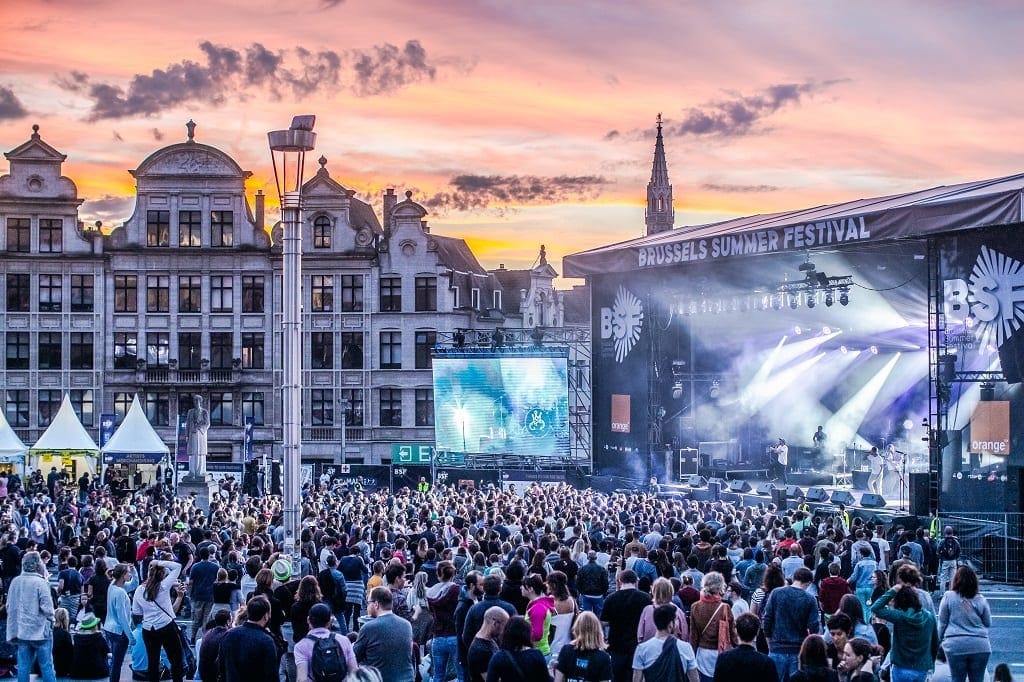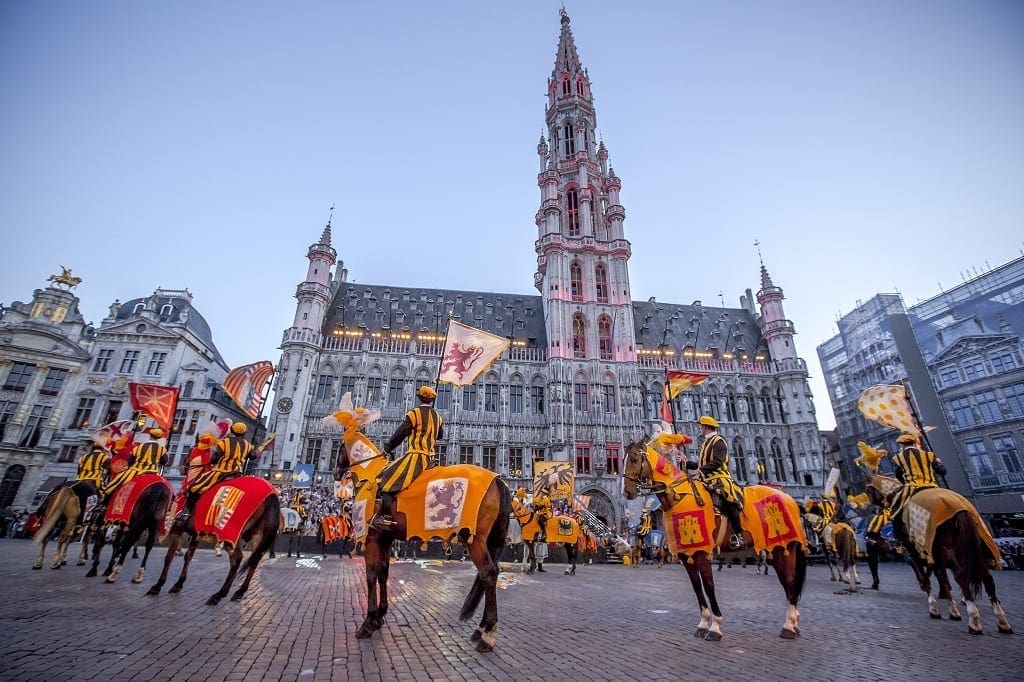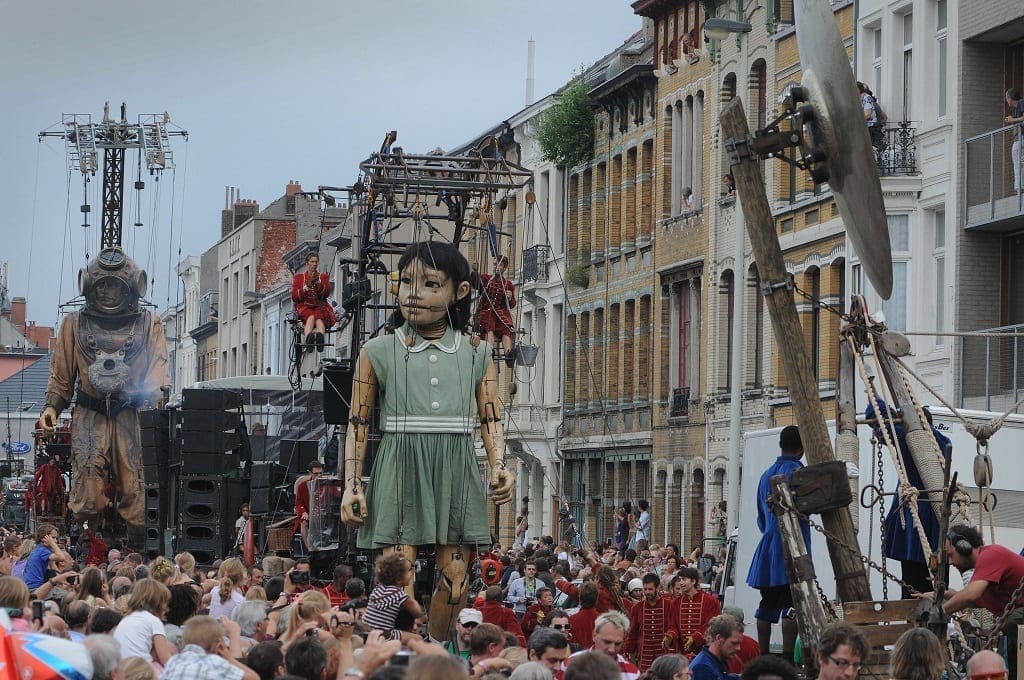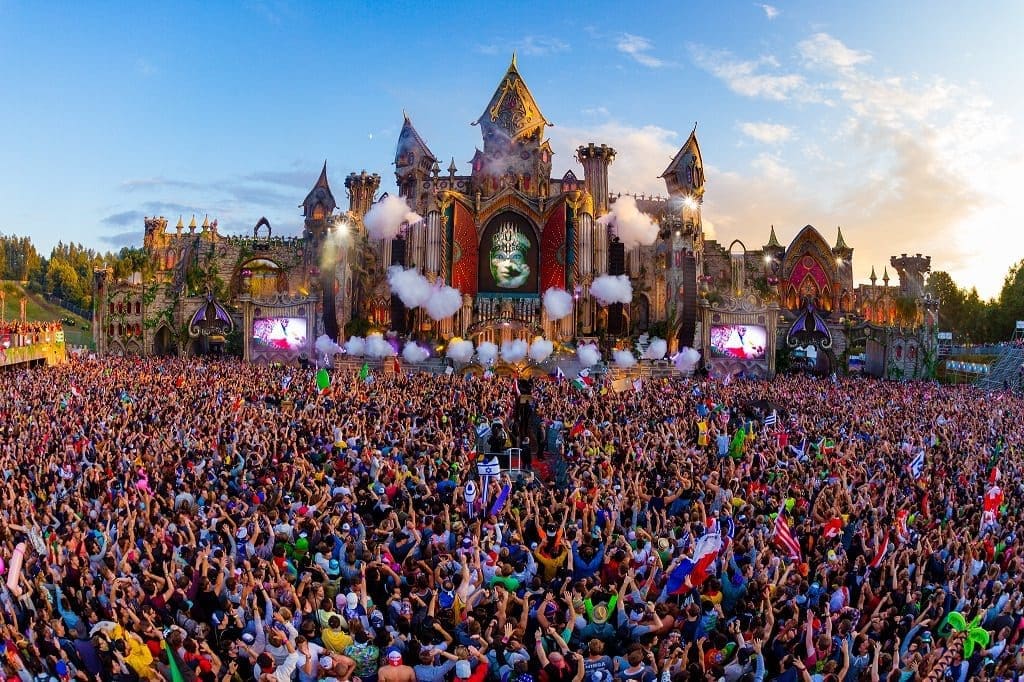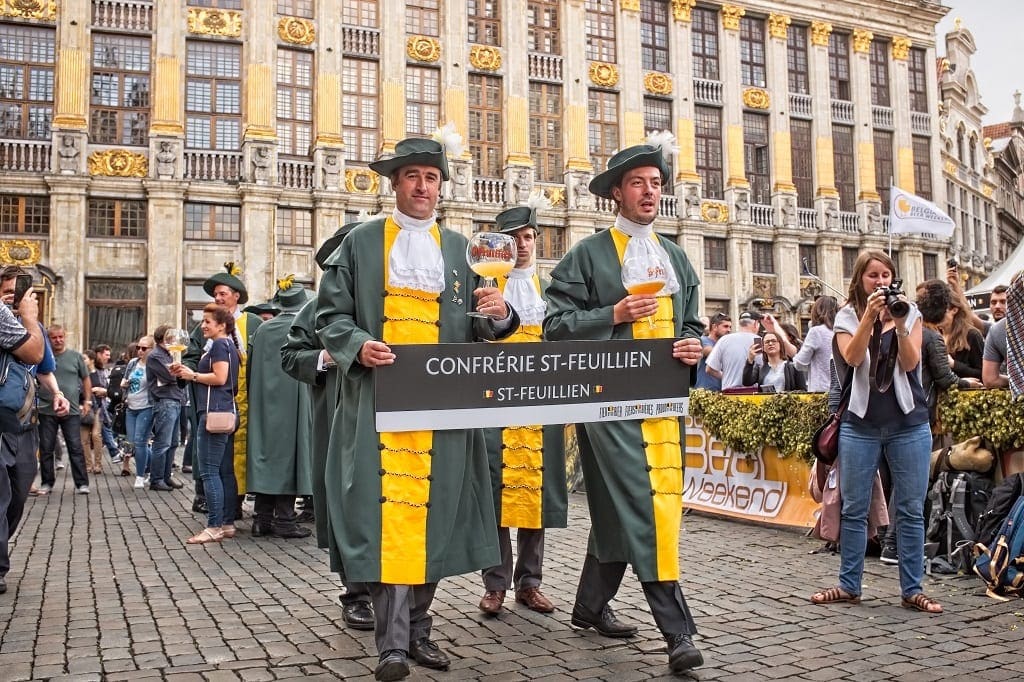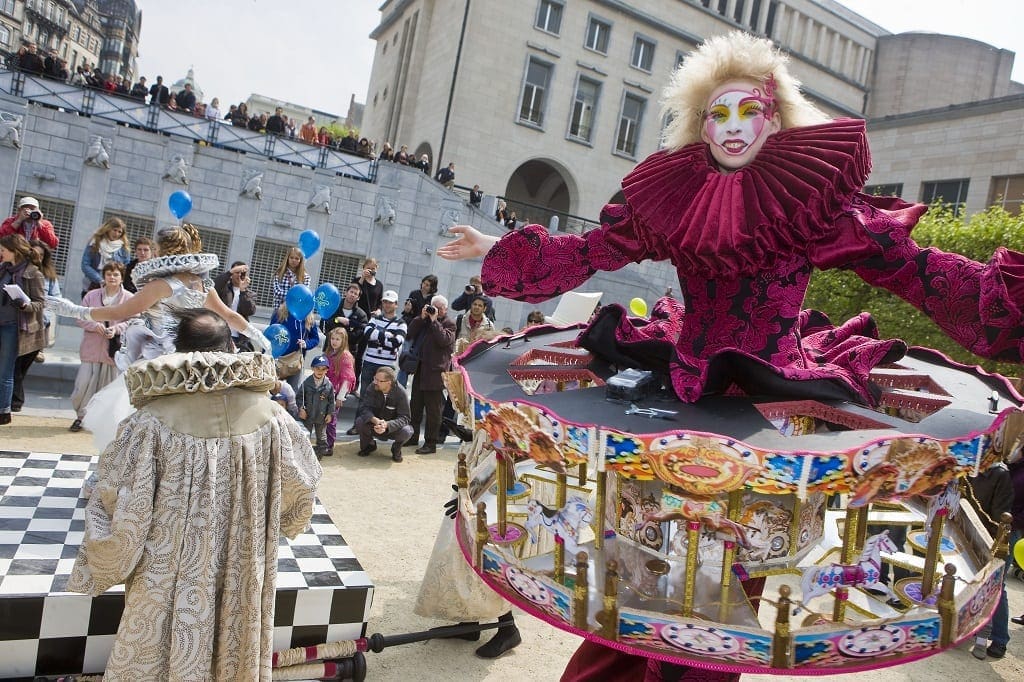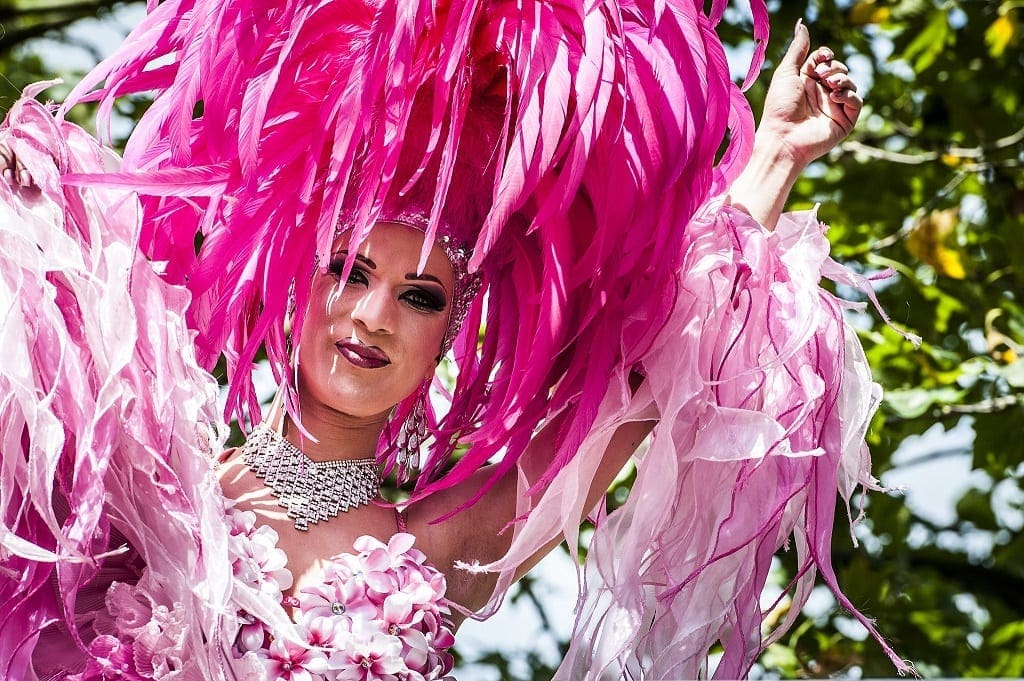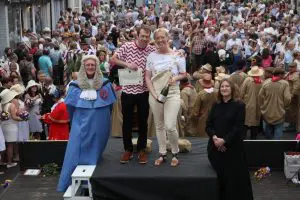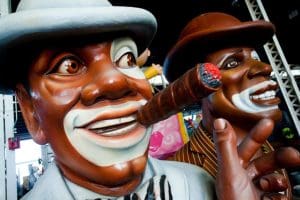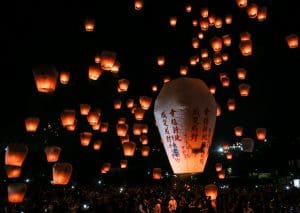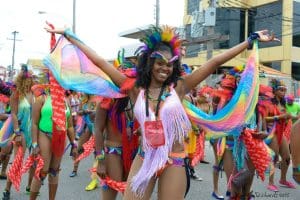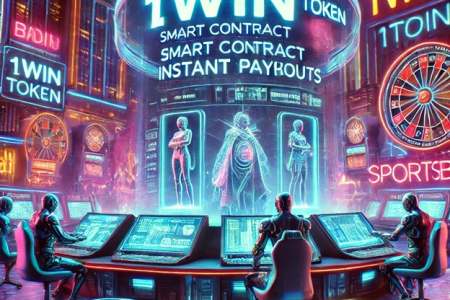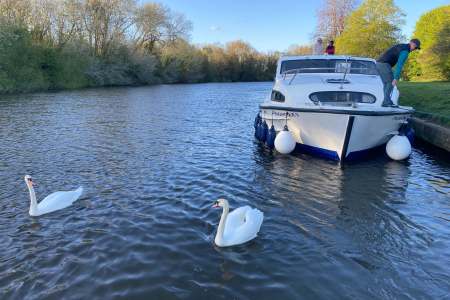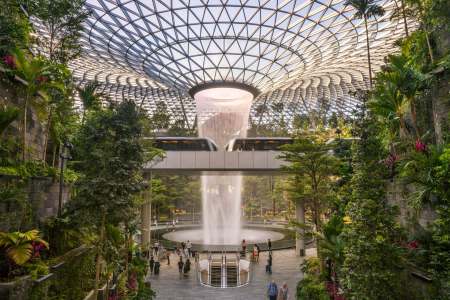Belgium, one of Europe’s smallest countries, punches well above its weight with a rich history, diverse culture, undiscovered scenery and celebrated gastronomy. Your Belgium travel will never be enough, making you want to return for more.
Explore plenty of centuries-old sites and Belgium’s off-the-beaten-path outdoors, or pick up a world-class cultural performance and sample one of the country’s wonderful regional cuisines during your Belgium travel. Perhaps most importantly, from the visual arts and music to folklore and politics, this little country is imbued with a love for the absurd and self-deprecating humour.
If the main attractions of Dutch-speaking Flanders in the north are its rich, medieval cities such as Bruges, Antwerp and Ghent, French- and German-speaking Wallonia in the south is littered with quaint, old villages and home to the Ardennes, an ancient geological plateau with dense forests, rolling valleys, rivers and caves. That is not to say these tourist assets are mutually exclusive on your Belgium travel – many of the nature reserves of Flanders are undiscovered territory for foreign visitors while Wallonia’s cities and towns such as Dinant, Mons, Malmedy and Namur remain underrated. And did you know that Belgium has more castles per square kilometre than any other country in the world?
What it lacks in clarity and size, Belgium makes up with originality and quirkiness
While Belgium’s three linguistically and culturally distinct communities – Dutch, French and German speakers – make for a unique and diverse heritage, they have also led to a complex, tangled state structure that often baffles outsiders – and locals too. Belgium is a federal state with six different governments – each with its own parliament – and a constitutional monarchy. Brexit-exasperated Brits should take solace in the tiny neighbour across the channel. When in 2011 Belgium was left a year and a half without an elected government, local media observed not without glee that the country’s economy was doing remarkably well during that period. No wonder some of the leading names in surrealism hail from Belgium.
What it lacks in clarity and size, Belgium makes up with originality and quirkiness. Its national symbol Manneken Pis – a rather diminutive statue of a little boy urinating – is the polar opposite of the majestic US Statue of Liberty but, as many observe, he feels so much freer. Meanwhile, the Brussels Atomium – a 165 billion times magnified cell of an iron crystal whose insides you can explore – was the country’s rather accidental answer to the Eiffel tower and has become a prime tourist attraction.
If you are travelling abroad be sure to get a travel sim from Simify.
With so many things to do in Belgium, you’re almost always certain to come across something that will surprise or charm you on your exploration of this often contradictory kingdom.
Read on for more guidance on Belgium travel for the Over 40s.
Belgium Heritage and Culture
Few countries can offer a cultural and artistic heritage as rich and diverse in such a small territory as Belgium can. Although modern day Belgium was established fairly recently when it seceded from the United Kingdom of the Netherlands in 1830, its roots stretch back over 2,000 years to the Roman province of Gallia Belgica. Remains of Roman walls and aqueducts can be found in the city of Tongeren but you can travel even further into the past with a visit to the 6,000-year-old Neolithic Flint Mines of Spiennes in Mons which is a UNESCO World Heritage Site, or explore the extensive network of the prehistoric Goyet Caves in Namur province, one of Europe’s most valuable archaeological places.
Being at the crossroads of Western Europe has been both a curse and a blessing for Belgium. As many major powers fought their wars on its territory, they also left behind one of the continent’s most diverse cultural legacies. A typical example is the Walloon city of Tournai which has been ruled by virtually every Western European country, including a five-year stint by the Tudors. The 1515 citadel Tour Henri VIII is just one remnant you can visit here on your Belgium travel, alongside monuments from other ages and occupations such as Spanish mansions, French Louis XV house fronts, and the 12th-century cathedral of Notre-Dame, another UNESCO World Heritage Site.
The 1531 stock exchange of Antwerp was the world’s first
The territory of today’s Belgium – which was throughout history a mix of autonomous medieval communes, principalities, duchies, counties and, at times, powerful cities – was amongst the world’s most developed regions since the Middle Ages up to the 18th century. The high urbanisation of Flanders’ medieval trading towns led to a sophisticated culture with art and architecture rivalling that of northern Italy. To get an inkling of that wealth and influence, Belgium boasts hundreds of museums, cathedrals, churches and town halls where you can find some of the leading names from every major period in art history. From the Flemish Primitives, such as van Eyck, and Renaissance and Baroque masters like Rubens, Brueghel and van Dyck – the latter who became England’s leading court painter – to the surrealists Magritte and Delvaux.
The rise of Flanders was fuelled by trade, thanks to its ports and its location in the centre of Western Europe. The 1531 stock exchange of Antwerp was the world’s first, and became a model for London and Amsterdam – this historical monument with its stunning domed courtyards is being renovated and can be visited again in 2019. Nowadays, Antwerp is Europe’s second-biggest seaport and touring the Antwerp port by boat is a popular tourist attraction.
In contrast, Wallonia’s rise was built not on trade but on natural resources during the Industrial Revolution, especially coal and metal. It was the Napoleonic Empire that spurred mechanisation and production, leading to Wallonia becoming the world’s second industrial power after Britain. Four former mining locations in Wallonia from the early 19th century are now UNESCO World Heritage Sites. You can visit them as museums on your Belgium travel.
Did You Know?
Belgian music legend Jacques Brel is the most influential non-English language singer of all time. His songs were covered by music icons from rock to jazz and punks to Goths, including Iggy Pop, David Bowie, Nick Cave, Nirvana, Marc Almond, Scott Walker, Alex Harvey, Nina Simone, Dusty Springfield, Shirley Bassey, Celine Dion, Frank Sinatra, Tom Jones, Dionne Warwick, Judy Collins, Ray Charles, Barbra Streisand, John Denver, Leonard Cohen, Neil Diamond, Nana Mouskouri, Andy Williams, The Kingston Trio, and the list goes on. This is without counting music stars outside of the English language sphere…
Visit the small but informative Fondation Brel museum in the centre of Brussels to find out everything about “Jacky”.
Belgium’s cultural influence in the wider world is perhaps best illustrated by its high concentration of UNESCO World Heritage Sites – a total of 13, nearly half the number of that of the whole of Russia. In addition to the ones already mentioned, other notable World Heritage sites include lavish town houses by the Belgian art nouveau pioneer Victor Horta in Brussels, while the beautiful Plantin-Moretus Museum in Antwerp – a magnificent printing and publishing house from the Renaissance – stands out as the world’s only museum on the UNESCO list.
If your Belgium travel take place in summer then you will be tempted to include one of the country’s countless annual music events. The prestigious Queen Elisabeth Competition is renowned for starting the careers of numerous international classical musicians while the outrageous Tomorrowland extravaganza is the world’s largest electronic music festival seeing half a million revellers in 2018. That Belgium is also a jazz country littered with plenty of jazz bars is no wonder since the saxophone was invented in the Walloon city of Dinant by Antoine-Joseph Sax, while international jazz legends from Belgium include harmonica wizard Toots Thielemans and the Roma guitarist Django Reinhardt.
For shopping enthusiasts, Belgian beers and chocolates are indispensable parts of Belgian heritage (see below “Gastronomy”) but so are Antwerp diamonds and avant-garde fashion. Take a tour of the excellent diamond museum DIVA to discover why Antwerp is the diamond capital of the world and if you want something stylish to go with your precious stones, check out internationally-acclaimed labels Dries Van Noten, Ann Demeulemeester, Marina Yee, Walter Van Beirendonck, Olivier Strelli, and Diane Von Fürstenberg.
Latest Belgium Travel Industry News
Belgium Travel: Outdoors and Nature
One of the reasons why Belgium has been invaded by foreign powers left, right and centre is because of its hard-to-defend featureless borders. Particularly in Flanders the landscape is flat with plains often touched by low, grey clouds, described as either boring or dramatic, depending on your tastes – or generosity. This makes Flanders an ideal place for cycling and walking, and even though its only mountains are cathedrals, as Jacques Brel sang, Flanders is home to extensive forests, pretty river landscapes, protected nature reserves and a sandy coastline.
As most tourists tend to flock to its historical Flemish cities, you will often find yourself off the beaten path when exploring the outdoors in Flanders. The moorlands of Kalmthout (Kalmthoutse Heide) – one of Flanders’ oldest and largest nature reserves – are very popular with locals throughout the entire year, due to its excellent walking, especially between mid-August and mid-September when the heath becomes a vast carpet of purple.
On a similar theme, the Hallerbos, near Brussels, is a large primeval forest that simply turns magical when its countless bluebells burst into flower in spring, while in winter the forest floor becomes a carpet of ochre-brown leaves. Home to giant Sequoia trees and plenty of wildlife, the forest used to be Belgium’s best kept nature secret but is now becoming increasingly popular with international visitors because of the density and intensity of its blooms. Yet, Flanders has more than enough picturesque forests and parks, vast marshes and rolling dunes for you to discover on your Belgium travel.
As the birthplace of history’s most successful racing cyclist, Eddy Merckx, it’s hardly a surprise that Flanders is also a cycling mecca. Themed cycling routes take you along the coast past beaches, ports and sea dykes; through historical castles; or for the brave or foolhardy to abbeys where you can sample Trappist beers.
The Ardennes is a vast outdoor playground covering all of south-eastern Wallonia
In contrast to Flanders, Wallonia is Belgium’s most sparsely populated and most forest-covered region, making it a great outdoor destination for its unspoilt nature and generous offering of activities. Home to Belgium’s highest point, the Signal de Botrange, which, at 694 metres, is not very high at all, Wallonia’s landscape is still very different and much more varied than that of pancake-flat Flanders. Here is Belgium’s largest nature reserve called the High Fens in the province of Liège, home to an abundance of flora and fauna including protected bird species. Although a restricted area, specified zones allow for outdoor activities ranging from adventure trekking and cycling to cross-country skiing in winter.
Further south lie the Ardennes, Belgium’s green lung and site of fierce battles during both world wars. Together with the Belgian coast, this is the most popular weekend break destination for Flemish tourists from across the soft language border. Comprised of dense forests, rough terrains, plunging valleys and fast flowing rivers as well as some of the country’s most picturesque villages, the Ardennes is a vast outdoor playground covering all of south-eastern Wallonia.
Apart from endless walking and hiking opportunities, the Ardennes are also famous for its prehistoric caves of which the Caves of Han-sur-Lesse are one of Europe’s most beautiful with their haunting caverns and majestic galleries. If you’re looking for more adrenaline-fuelled activities on your Belgium travel then take the twenty-kilometre-long kayak ride down the river Ourthe, negotiating wild rapids and passing through the magnificent Hérou Gorge.
For history buffs, Wallonia also has its fair share of castles, forts, barracks and monuments that commemorate some of Europe’s biggest battles, with the most notable memorial towns being Waterloo – not named after the Abba song but the other way around – and Bastogne where the infamous WW2 Battle of the Bulge raged (referred to in Belgium as the Battle of the Ardennes).
Our Top 5 Favourite Belgian Inventions
The contraception pill – it makes life simpler
The JPEG conversion – we like a fast upload
The praline – just can’t get enough of them
The Big Bang Theory – we love to make some noise
The saxophone – and all that jazz…
Gastronomy – Belgian Cuisine
You won’t risk going hungry on your Belgium travel. Belgians are bon vivants, and although they love their local cuisine which goes far beyond the iconic fries, beers, waffles and chocolates, they also love exploring other culinary traditions. The country boasts over a hundred Michelin-starred restaurants while in cosmopolitan cities, such as Brussels and Antwerp, you can indulge in food from all corners of the world.
Belgium’s own traditional cuisine is delicious and generous, borrowing from its neighbours French quality and German portions. Some of the clichés are true – Belgians love eating fries which, in an ongoing dispute with France, were erroneously called “French”, they claim, by American soldiers fighting alongside French-speaking Belgians who were making fries as a cheap food source in the trenches. Whatever the truth of this earthshaking controversy, Belgians perfected them due to the variant of potato they use and by frying them twice, each time at different temperatures. You won’t necessarily find the best ones in restaurants and bistros where they’re typically eaten with mussels or steak, but rather in the humble friterie (French) or frietkot (Dutch) – simple fries shacks – where they are served in a paper cone and with an endless choice of sauces. You can’t miss them, they’re everywhere.
If you’d like to expand your gastronomic horizons on your Belgium travel, then try some of the other traditional specialities which include stoofvlees or beer-simmered Flemish stew; paling in’t groen or eel prepared in an abundance of green herbs, an Antwerp speciality; rabbit with prunes cooked in fermented Gueuze beer, popular in Brussels; vol-au-vent which is a round-shaped pastry filled with chicken, mushrooms and cream; waterzooi, a creamy fish stew with vegetables and eggs, originally from Ghent; oven-baked Belgian endives wrapped in ham and covered with a rich cheese sauce, which is called chicons au gratin; and if you find yourself at the coastal town of Ostend you must try tomates crevettes which are tomatoes stuffed with tiny grey North Sea shrimps. The latter are still harvested traditionally by fishermen on horseback which has been inscribed on the UNESCO list of Intangible Cultural Heritage of Humanity.
Jenever is one of the best kept secrets among spirit lovers around the world
To satisfy your sweet tooth, Belgian chocolates are world famous, as are Belgian waffles with different specialities in Brussels and Liège. In Ghent and Antwerp you’ll find the cone-shaped purple-coloured neuzekes which are raspberry-flavoured sweets resembling noses, and when ordering coffee it will be served typically with speculoos, a kind of spiced shortcrust biscuit.
One often overlooked food in Belgium, and perhaps a bit of a secret, is its bread. Belgians eat it every day and get it freshly-baked from their local bakkerij or boulangerie where they bake dozens of delicious varieties. Buying pre-packed bread is a taboo, so when in Belgium try out your local boulangerie where Belgians would typically also buy koffiekoeken for Sunday breakfast. These are best described as viennoiserie-type pastries in various shapes and with different fillings such as baker’s cream, frangipane, cherries, peach, raisins, pineapple and often covered with plenty of chocolate.
Belgium’s spirits equivalent of beer is jenever, a protected product of origin from which gin evolved, and has been the country’s national spirit for over 500 years. Coming in all kinds of flavours, bottled in handcrafted clay jugs and served in shot glasses at freezing temperatures, jenever is one of the best kept secrets among spirit lovers around the world. Have a few to aid your digestion after all that great food you’ve tried.
Last but not least, Belgian beer hardly needs any introduction. The little kingdom counts no less than 1,600 different varieties – the highest number per capita in the world – which are produced in different regions in Belgium using different fermentation methods. The beer brewed in the Abbey of Westvleteren – one of six beer-brewing Trappist monasteries in Belgium – has repeatedly been rated the best in the world. As it’s all about quality, the label-less bottles can only be bought in limited quantities at the abbey itself or drunk in the café across the road which is aptly called In de Vrede (“In Peace”). Since Belgian beer culture was inscribed by UNESCO as an Intangible Cultural Heritage of Humanity, here’s your best excuse to delve into some serious culture on your Belgium travel.
Belgium Travel: City Breaks
A media synonym for faceless bureaucracy, Belgium’s capital Brussels is much more than the seat of EU institutions. One of Europe’s most multi-cultural and greenest capitals, it has iconic cafés, a busy nightlife – including a vibrant LGBT community – and a great dining scene. Located in Flanders, the majority French-speaking city makes for a unique mix of Flemish roots and French orientation, perhaps most visible in the Marolles and Sablon quarters famous for their flea markets and antiques.
Many architectural landmarks were destroyed during a terrible building spree in the 1960s and 70s which makes visiting Brussels a little like a treasure hunt, discovering architectural gems hidden in unsuspected places. While the medieval Grand Place is another UNESCO World Heritage Site and often voted Europe’s most beautiful square, most of Brussels’ architectural landmarks represent various later styles. Truly unique to this capital is its love affair with comics illustrated by many murals of Belgian comic (anti-)heroes such as Gaston, Tintin, Lucky Luke, the Smurfs and others, with its apotheosis the Belgian Comic Strip Center.
Cool and trendy Antwerp is Flanders’ unofficial capital and home to Belgium’s best nightlife, a plethora of historical monuments and museums, and edgy fashion boutiques. Don’t forget to check out its central train station in the diamond quarter. Historical Bruges is very popular with tourists the world over on their Belgium travel and best visited outside of holiday seasons when this “Venice of the North” is less crowded. Equally beautiful is lively Ghent, Belgium’s “other Bruges” with fewer tourists and a more authentic feel, while Leuven is great during the week when this historical city comes to life thanks to the students from the world’s oldest Catholic university. It’s also home to the world’s biggest brewer – maybe that’s no coincidence. Other notable Flemish towns include Mechelen with its old-world beguinages (or enclosed communities), Hasselt, Kortrijk and the coastal towns of Knokke-Heist and Ostend.
Wallonia’s prettiest city is arguably the fairytale riverside town of Dinant
Wallonia’s official capital Namur has Europe’s largest citadel, dating back to the early Middle Ages. Occupied at different times by French, Austrian, Spanish, Dutch and German armies, these days Namur’s citadel is mainly occupied by tourists. Namur is not Wallonia’s largest city though – that’s Liège. Once an industrial powerhouse, a recent regeneration of the city has replaced Liège’s drab industrial past with a lively nightlife, while it’s also home to dozens of historical churches and monuments, including its 1255 citadel and the late-Gothic St. Martin basilica.
However, Wallonia’s prettiest city is arguably the fairytale riverside town of Dinant. Close to the French border, Dinant is enclosed by the river Meuse and forested hills. One of its main attractions is, yet again, a historical citadel that can be reached by cable-car, while its stately abbey of Leffe mainly attracts beer lovers. For the latter, please note that the popular Leffe beer is not one of the protected Trappist beers as the monks are of a different religious order and the beer is brewed commercially. Enjoy a sunset cruise on the Meuse River here, or explore la Merveilleuse, one of Belgium’s most beautiful underground caves.
Other noteworthy towns in Wallonia include Mons which was Europe’s capital of culture in 2015; Spa in the Ardennes, a famous health resort since the 16th century where the English word spa comes from (18th-century British PM William Cavendish was born here); historical Tournai, Belgium’s oldest city (see above “heritage and culture”); and Durbuy which is Belgium’s smallest city but possibly its most charming too – wander its perfectly preserved medieval cobblestone streets, visit its beautiful 17th century castle and let your kids get lost in the world’s largest topiary maze while you try out the regional beers.
Festivals in Belgium
From large beer, music, film and folklore festivals to age-old carnivals, popular sports events and battle re-enactments, Belgium has its fair share of festivals and events to keep you occupied on your Belgium travel.
Some of the most noteworthy festivals include the Bruges Beer Festival, one of Belgium’s best, which usually happens in April; the Carnival of Binche in March which harks back to at least the 14th century and features eerie, identical face masks combined with elaborate costumes; the Zythos Beer Festival is Belgium’s largest and takes place in April in Leuven; the month of May sees both the religious Procession of the Holy Blood in Bruges and the Belgian Pride parade in Brussels while the re-enactments of the 1815 Battle of Waterloo in June is popular with foreign visitors; musical events take place all year round but the summer months see some of Europe’s biggest music festivals hosted in Belgium, including Tomorrowland, Rock Werchter and Dour Festival; Summer is also the time for Gentse Feesten in Ghent which is Europe’s largest cultural open air festival, while Brussels comes to life with the Brussels Summer Festival and the city of Hasselt with the popular Pukkelpop music festival – while there’s also yet again more beer with the international BXL Beer Fest of strictly craft beer only; in September head to Namur for the Fêtes de Wallonie (Festival of Wallonia), and from October to December there are Christmas markets all over the country, each with its own character, with the Brussels Christmas Market and the Antwerp Christmas Market probably standing out the most for their size and atmosphere.
When you plan for your Belgium travel make sure to look ahead and check out what events will take place during your visit as you will almost be guaranteed to find something that will pique your interest.
A Selection of Festivals in Belgium
What’s in a Name?
Because of Belgium’s complicated language protection laws, driving from one language region to another may be a confusing challenge for foreign visitors. If you drive the 100 km stretch from Antwerp in Flanders to Mons in Wallonia, you will first have to look for place name signs with “Bergen” (Flemish for “Mons”) till you cross into bilingual Brussels where the signs will say both Bergen and Mons, after which it changes back to only Bergen when entering Flanders again, to finally change to Mons when entering Wallonia. Let’s not talk about the German speaking area…
Belgium Weather
Belgium has a maritime and tempered climate with relatively mild winters and summers, and precipitation possible all year round. However, despite its small size there are regional climatic differences and a lot of variability in the unpredictable weather. Maritime influences become weaker more inland, which means that the Ardennes in Wallonia is the coldest with 30 to 35 days of snow in winter, with also the highest rainfall. Flanders and the seacoast are typically warmer throughout the year and see less precipitation.
Perhaps even more so than the British, Belgians are so obsessed with the weather that you can make instant friends just by complaining about it.
When to Go on Your Belgium Travel?
If you plan a city trip and you’re not put off by a bit of rain or cold, then any time of the year is a good time for Belgium travel.
For outdoor activities in pleasant weather, the best time is from mid-May to mid-September. The mid-summer period is also the best period for festivals with plenty of things going on every weekend. Winter is good for Christmas markets and ski walking in the Ardennes, while springtime sees lots of flower events such as the Floralia Brussels flower show and the blooming of bluebells in the Hallerbos.
In any case, it’s always best to keep a raincoat and umbrella handy.
Latest Belgium Travel Features & Articles
Belgium Visa
Belgium is a signatory of the Schengen agreement, which means a Belgian visa will grant you access to all other 25 Schengen member states (and vice versa). The Schengen zone covers most – but not all (the UK is excepted) – of the European Union and some non-EU countries, such as Norway, Iceland, Switzerland and Liechtenstein. However, many countries do not need a visa to enter the Schengen zone. For full details on Belgium visa requirements and how to apply, click here.
Many countries are exempt from needing a Schengen visa. Click here to find out if you need one .
Trains and Flights to Belgium
Belgium is extremely well connected by train. With Brussels lying within 1,000 kilometres of most Western European capitals, consider swapping your plane flight for the much more eco-friendly – and more scenic – option of train travel. If you’re in a hurry, Belgium has four high-speed train services which all stop in Brussels South railway station (called Bruxelles Midi in French and Brussel Zuid in Dutch) with some also calling on Antwerp and Liège. They are Eurostar, Thalys, TGV and Intercity-Express (ICE) placing Brussels within two hours by train from London, Amsterdam and Cologne, and under one-and-a-half hours from Paris.
If you must travel by plane, Belgium’s main international airport is Brussels Airport, with small airports including Brussels South Charleroi Airport, Antwerp International Airport, Ostend-Bruges International Airport and Liège Airport. Most international direct flights are to Brussels Airport which is well connected by train to the city centre with services every ten minutes, as well as by direct train links to other main cities in Belgium.
Getting Around in Belgium
Belgium’s high density motorway network is often congested with traffic making the train the best way to get around between regions and cities. In fact, the first train on Europe’s mainland ran in 1835 from Mechelen to Brussels, and today Belgium has the highest rail network density within the European Union.
Brussels South (Midi / Zuid) is the country’s biggest train station but rather drab. By contrast, Antwerp’s 19th century station called Antwerpen Centraal is a must if you love train travel and architecture. Newsweek put it fourth on its 2009 listing of most beautiful train stations in the world, while the British-American site Mashable ranked it number one in 2014. To book tickets online go to the Belgian railway website. On their website you can also buy an MOBIB smart card that gives you access to Belgium’s entire train network and all of Brussels public transport network.
Belgian trains are inexpensive and fairly well connected with other modes of public transport, such as the metro (only available in Brussels), buses and trams.
If you want to visit the Belgian seaside, the De Kusttram – the world’s longest tram route running along the entire coast between the French and Dutch borders – is a great way of exploring it. Other tram networks exist in the cities of Antwerp, Brussels, Ghent and Charleroi – they are an efficient way of getting around as they are usually unhindered by other traffic.
Many locals also share bikes for getting around within cities
Because of Belgium’s convoluted political division of regions, its public bus network is unfortunately managed by three different providers: De Lijn in Flanders, TEC in Wallonia and STIB/MIVB in Brussels. This does not make things particularly simple to say the least, as not all tickets are interchangeable between providers, but since you’re most likely to take a train to move between regions, it shouldn’t affect you.
There are many discounts and special passes for different age categories, group travel and certain periods such as during weekends. Check out the respective websites (see above links) for the best deals.
Finally, many locals also share bikes for getting around within cities. They are great for shorter distances and operated by different companies in Belgium’s larger cities. Typically subscription-based, these make an efficient way of renting a bicycle for a very low fee or even free. Blue Bike is best connected to railway stations and operates across Belgium’s three regions. You need a yearly subscription though so if you only are going to use it a couple of times, you’re better off with a city bike sharing system such as: Villo! In Brussels, Velo in Antwerp and Li Bia Velo in Namur. Or try out the electrical scooter sharing systems Troty and Scooty if you prefer to conserve your energy for other things on your Belgium travel.
Belgium SIM Cards / Internet
Belgium’s cellular network is pretty fast and reliable. Thanks to new EU regulations, there are no roaming charges anymore across the EU which makes it no more expensive to call or use the internet in other EU countries with your Belgian SIM card. There are a few exceptions which you can ask about when buying your local SIM card.
Belgium has three main mobile internet operators, which are Proximus, Orange and Base. All three are pretty decent which great speeds. Proximus and Orange have reportedly the highest 4G coverage at nearly 100%, while Base has less coverage in Wallonia but is also 100% in Flanders. Proximus is reputedly the most expensive one while Orange offers the cheapest packages.
Buying a local SIM card is fairly quick and easy, but you need to show your passport. You can find the operators’ local shops at Brussels Airport, some of the main train stations and in many towns.
Belgium Language
Belgium has three official languages which are Dutch (spoken by about 60% of the population), French (40%) and German (less than 1%). Dutch in Belgium is often referred to as Flemish, after the population of Flanders who speak it. The Flemish and the Dutch share the same dictionary, but there are some small differences in vocabulary and pronunciation. The same could be said of Belgian French and French French. As a way of comparison, the difference between British English and American English is larger.
There are also a remarkable number of strong regional dialects in Flanders, while in Wallonia some elderly people still speak Walloon which is considered by some as a distinct Romance language.
Historically, Brussels was a Dutch-speaking city but has become mainly French-speaking over the past two centuries. As such, Brussels is a French-speaking enclave within Flanders. However, since the original inhabitants were Dutch speakers, there is a lot of Flemish influence in Brussels French, which is not the case of French in Wallonia.
In Antwerp there is also a sizeable Jewish community – about 20,000 people – of which many speak Yiddish. In more recent decades the influx of immigrants has also resulted in many other languages spoken as a mother tongue of which the main ones are Berber, Arabic, Turkish, Portuguese, Spanish, Italian, Greek, Polish and English.
While Flemish speakers will most likely understand and speak English, knowledge of English amongst the French speakers in Belgium is considerably less, but overall it won’t be difficult to get along with only English on your Belgium travel.
Currency in Belgium
Belgium is part of the Euro zone of currencies.
Belgium Timezone
Belgium’s time zone is CET/CEST (UTC/GMT +1 or +2) depending on daylight saving time.
Belgium Country Code
Belgium’s dialling code is +32.
Booking a hotel or flights for your Belgium travel? Look no further.
Are you booking a hotel, a budget hostel, or a five-star resort for your Belgium travel? Our hotel and flight comparison engine will help you find the best flight and hotel deals from around the world. Each booking also helps to support our website while still getting you a great deal on booking hotels and flights. Get started below.
We search hundreds of online travel agent (OTA) websites to find you the best available deals on Belgium hotels and flights to Belgium. Your booking is made directly and securely through the travel operator website (e.g. Agoda, Booking.com), we don’t handle your bookings or any payments directly.
Background cover photo © Musea Brugge; Introduction text photo and last photo © visit.brussels – Jean-Paul Remy; Getting Around in Belgium photo © visit.brussels – Eric Danhier


